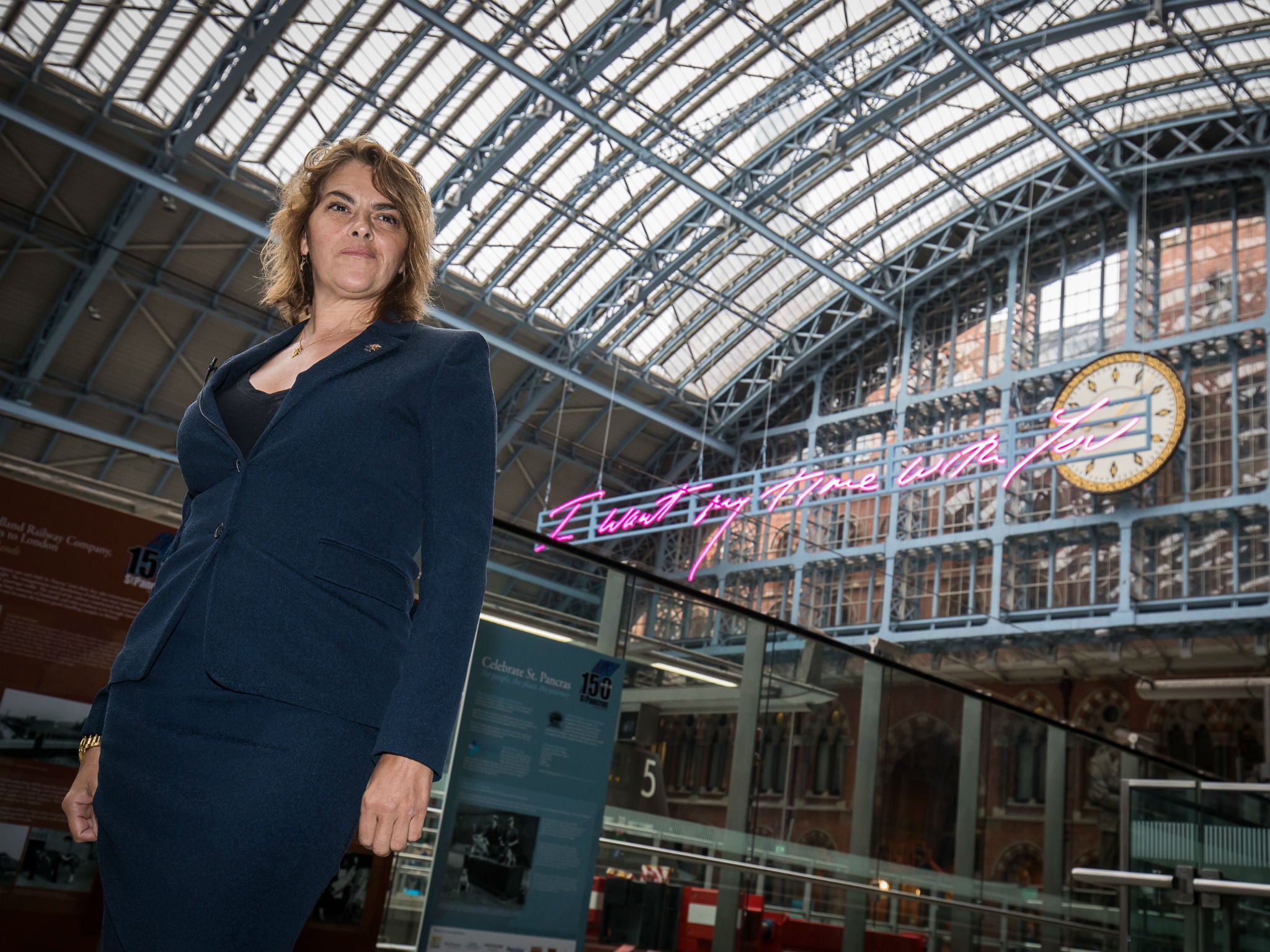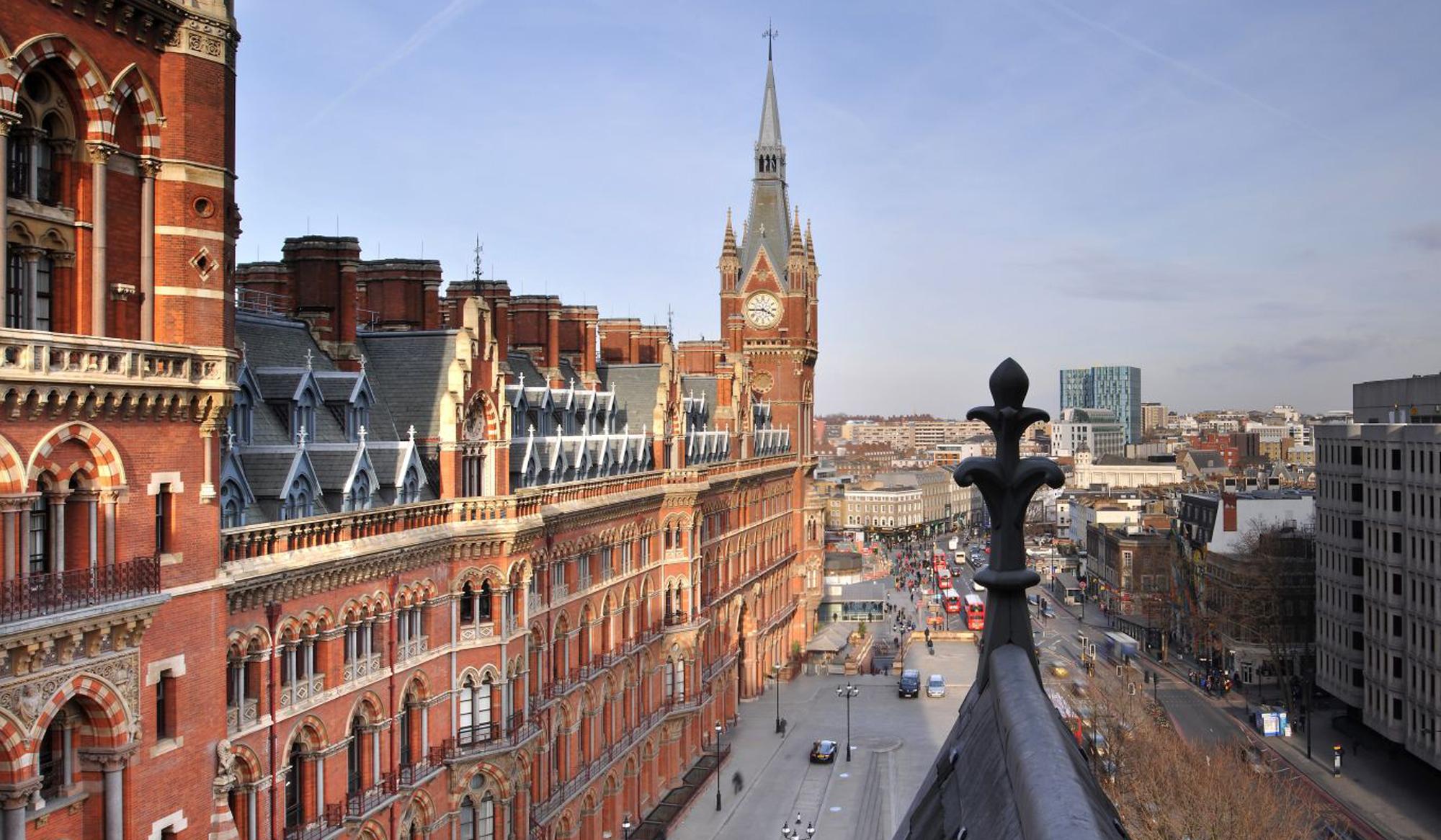No time for it: Tracey Emin's artwork for St Pancras station is lame and unlovely
Her light sculpture 'I Want My Time With You' is the latest example of dismal public art made for train stations

Your support helps us to tell the story
From reproductive rights to climate change to Big Tech, The Independent is on the ground when the story is developing. Whether it's investigating the financials of Elon Musk's pro-Trump PAC or producing our latest documentary, 'The A Word', which shines a light on the American women fighting for reproductive rights, we know how important it is to parse out the facts from the messaging.
At such a critical moment in US history, we need reporters on the ground. Your donation allows us to keep sending journalists to speak to both sides of the story.
The Independent is trusted by Americans across the entire political spectrum. And unlike many other quality news outlets, we choose not to lock Americans out of our reporting and analysis with paywalls. We believe quality journalism should be available to everyone, paid for by those who can afford it.
Your support makes all the difference.Tracey’s back. This morning she’s posing for a gaggle of snap-happy photographers, all kneeling in obeisance, inside Barlow’s great Victorian train shed at St Pancras International station. She prinks at her piled up auburn hair. She stands up on a little bar to increase her height somewhat. She sets her face in that snarly, wonky, slightly combative look of hers. Two more minutes, she calls. One more minute! Thirty seconds!
We’re here to celebrate – or, at worst, merely look at – a new light work, drawn in her own handwriting, which hangs suspended in the air in front of Dent’s clock. She’s full of self-praise at the press conference in Searcys Champagne Bar a few minutes later, where the coffee and the croissants spill to infinity.
She loves the work she’s made. It was tremendously difficult to bring off. Seven months of hard labour. A lot of health and safety issues – height, weight, etc. No, it’s not neon, that would have been too heavy. LED lights, she mentions. How many cables in all? She shouts out for an answer to a technician who’s gone AWOL.
Most important of all was not to shock the train drivers as they gently nosed in from Paris or Margate. Which meant that it couldn’t be yellow or green or red. Luckily, she only ever wanted the close-clench of pink anyway (yes, it’s pink), so that was a bit of a pink herring of an issue to bring up.
She loves Europe. She loves togetherness. “It’s a great, subliminal message sent out to the rest of Europe,” she shouts, buoyed up on the wings of her own rhetoric. She hates that the rich are so rich and getting even richer. She hates that the poor are so poor and getting even poorer. She’d even give away her own helicopter if it didn’t prove so useful in Provence.
That’s what it’s all about, this work, to make grim-faced travellers smile when they step off the train.
Tracey Emin has had a lot of dealings with words. Almost a quarter of a century ago, she embroidered a roll call of her lovers on the walls of a tent, thus gaining for herself instant, eye-catching notoriety. She has often written words – tiny stories of her domestic woes – beside scratchy little drawings of birds. Her handwriting looks a little scratchily birdy itself. She has written words in pen, paint, felt tip, pencil, or had them refashioned and magnified in steamy, erotic-blue neon, the sloganeering cries of a lonely heart, and all rendered in that dithery, awkward, childish handwriting of hers.

Unfortunately, words have ever been reluctant to reciprocate her passion for them. A quick flick through a new book of the work of the past 10 years (Tracey Emin, Works 2007-2017, published by Rizzoli, and yours for £55) shows the extremely narrow range of her skills: You Don’t Believe in Love But I Believe in You or I Listen to the Ocean and All I Hear is You or She Lay Down Deep Beneath the Sea. In short, she has never been a dazzlingly inventive wordsmith. The words that she generally uses, and the order they run, in are – though straight-talking enough – often clumsy, stuttery, ill-expressed, cliché-strewn, the impulsive street words of an everywoman.
And today, and for an entire year, a few of Tracey’s words will be hanging, suspended from a grey gantry, 20 metres across, at St Pancras Station, a place through which the world breezes daily, back and forth, on its ceaseless flight to elsewhere and back. What do they say, these words of Tracey’s? I Want My Time With You.
I want my time with you.
I isolate it like that, giving it a paragraph out on its own, emphasising it in bold type, in order to let its profundity breathe for a moment.
Yes, from today, hot and sweaty off the train, you can pause for a moment as you smart-wheel your 50 kilos’ worth, moving with grinding remorselessness in the general direction of the roaring, traffic-asphyxiated misery of the Marylebone Road, then glance up for a micro-second, and, as you do so, find yourself falling into the arms of Tracey’s vague, lame, unlovely appeal.
The fact is that a lot of bad art (and other equally strange cultural diversions) hangs around – or perhaps idly malingers for want of better – at railway stations. St Pancras already has its fair share. Memories of the grand piano once gifted by Elton John linger in the old upright jalopy along the concourse which runs past M&S. Everyone and their three-fingered mother-in-law have jostled to sit down and bash out “Chopsticks” on it, tunelessly. Someone should have set up a trust fund for a piano tuner.
Or think of that gruesome, oversized statue commonly called The Lovers in grim close-clutch. That’s there too, directly beneath Tracey’s words, jostling for attention. Regrettably. Nobody asked for it. It was just presented to the nation like a recurring bad dream. It looks like a three-dimensional rendering of a very bad, very traditional painting.
Or think of the bronze of Betjeman a few yards along the platform, tubby in his waistcoat, clutching his shopping bag, looking up and marvelling that all his shouting had finally stopped them demolishing the Gothic revival splendour of what is now the St Pancras Renaissance Hotel. He was long dead by the time it had stopped, looking like a tired, derelict, windowless skeleton. No matter. His ghost cheered when the first high polished flute of champagne came foaming out of the jeroboam.

When you look at the station art of St Pancras, you would think that the 20th century had never existed. How many blind old men sit on the committee that chooses all this stuff?
And why bother anyway, you might say? To be perfectly frank, folks can’t really afford to pay much attention to public art at railway stations because they are always too busy going somewhere. Paris, for example. Or, even better, Sheffield. (Both these destinations are served by St Pancras.) A station is a place for hurrying through, not for lingering and looking. It’s not as if it’s a church. Churches are ideal for art because people sit and gawp and ponder in churches. That’s what churches are for. Lingering.
Some have tried to do a bit better by stations though. Stations have often been places of fascination to artists. After all, railways were the newest of the new – once. The Impressionists were keen on railway stations – which is quite surprising because the Impressionists were often, when it came to subject matter, very much traditionalists at heart, believers in Old France. It was the way they painted it which was so innovative. Think of Monet’s great paintings of the Gare Sainte-Lazare in Paris, for example – you can see one of them in the new exhibition devoted to Monet and architecture, which opens this week at the National Gallery. How he seemed to marvel at its great gouts of stinking smoke. What a spectrum of good, rich colours pollution threw up in those days!
And then, over in London, there was Pissarro with his view of that little train at East Dulwich, curiously nosing its way through suburbs in-the-becoming. You can see that painting in the Courtauld Gallery. Like the title of the painting itself – it’s called Lordship Lane Station, Dulwich – it’s a very modest locomotive, curiously unthreatening, cautiously inquisitive looking, not one with any apparent wish to oversell its own importance. Quite unlike Tracey in that respect then.
Join our commenting forum
Join thought-provoking conversations, follow other Independent readers and see their replies
0Comments